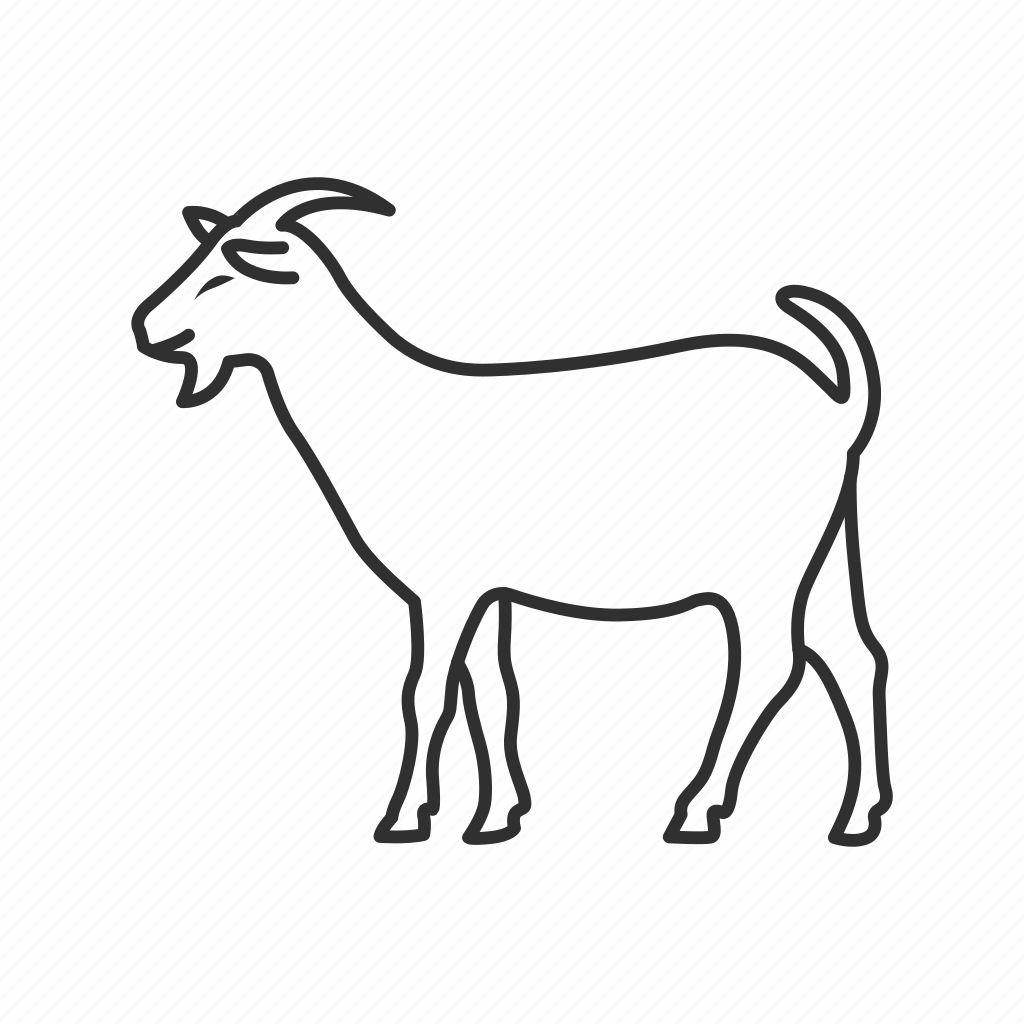Have you ever come across a conversation where someone uses the goat emoji? Do you wonder what it means or how to use it correctly? In this article with Impeccable Nest, we’ll be discussing the meaning behind the goat emoji and how to use it effectively.

What does the goat emoji mean?
The goat emoji 🐐 is a popular image of a goat’s head with horns that has become a staple in digital communication. It is often used to represent the literal animal in conversations related to farming, animals, or nature. The goat is known for its agility, stubbornness, and its ability to adapt to harsh environments, making it an important symbol in many cultures.
Apart from its literal representation, the goat emoji is also used metaphorically to convey a range of emotions and ideas in online interactions. For example, someone might use the goat emoji to show admiration for an individual’s talent and skill, referring to them as the “Greatest Of All Time” or simply “GOAT.” In this context, the goat emoji takes on a symbolic meaning beyond its literal representation, signifying excellence, superiority, or mastery.
The use of the goat emoji in this sense is believed to have originated in sports culture, where athletes who excel in their respective fields are often referred to as the “GOAT.” The acronym GOAT stands for “Greatest Of All Time,” and is used to describe individuals who are considered the best at what they do. In recent years, the term GOAT has been used more broadly to refer to anyone who is exceptional or outstanding in their field, not just in sports.
How to use the goat emoji?
The goat emoji can be used in various ways depending on the context. Here are some common examples:
- Literal representation of the animal: If you want to talk about a real goat or make a reference to goats, the goat emoji is ideal. For instance, “I saw a herd of goats🐐 on my way to work today.”
- Metaphorical use: The goat emoji can also be used as a metaphor to describe a person’s personality traits or behavior. For instance, “My friend is such a stubborn goat🐐.” This implies that the person is unyielding or hardheaded.
- Acronym GOAT: Another popular use of the goat emoji is to represent the acronym GOAT, which stands for “Greatest Of All Time.” In this sense, the goat emoji is used to describe an individual who is at the pinnacle of their craft or profession. For instance, “Tom Brady🐐 is considered the GOAT of football.”
What to reply to 🐐?
If someone sends you a message or an emoji of a 🐐, they are most likely referring to the acronym “G.O.A.T” which stands for “Greatest Of All Time”. In this context, the goat emoji is used to praise someone’s exceptional skills, achievements, or performances.
To reply to a 🐐emoji, you can use a variety of responses depending on the situation and your relationship with the sender. Here are some possible replies:
- Thank you! – This response is appropriate if the sender is praising you for something you have accomplished, and you want to acknowledge their compliment.
- You’re too kind – This is a humble response that shows gratitude for the praise while also downplaying your accomplishments.
- Coming from you, that means a lot – If the sender is someone you admire or respect, this response acknowledges the significance of their praise.
- I appreciate the recognition – This response is suitable if the sender is acknowledging your hard work or talent in a particular field.
- Back atcha – This is a playful response that implies that the sender is also a 🐐in their own right.
- Let’s keep pushing – If the sender is recognizing your success but also encouraging you to keep striving for greatness, this response shows that you are ready to continue improving.
- It takes one to know one – This response is a clever way of implying that the sender is also a 🐐because they recognize greatness when they see it.
Ultimately, the best response to a 🐐emoji depends on the context of the conversation and your personality. Choose a response that feels authentic to you and expresses your appreciation for the sender’s recognition.
Pros and cons of using the goat emoji
Using emojis in communication has its benefits and drawbacks. Here are some pros and cons of using the goat emoji:
Pros:
- Expressive communication: Emojis add a layer of expressiveness to digital communication that words alone cannot convey.
- Saves time: Sometimes, using an emoji can convey your message more efficiently than typing out a long text.
- Universally understood: Emojis are universally recognized and understood regardless of language barriers.
Cons:
- Misinterpretation: Some emojis have multiple meanings, leading to confusion or misinterpretation of intended messages.
- Overuse: Using too many emojis can make you come across as unprofessional or childish in formal settings.
- Cultural differences: Certain cultures may interpret emojis differently, leading to misunderstandings.
Different Meanings Associated with the  Goat Emoji
Goat Emoji
The 
In popular culture, the 

More recently, this icon has developed another connotation: since 2021 started off with an overwhelmingly chaotic year so far (thanks Corona!) then it only made sense for Twitter users to adopt “GOAT status” – referring to any person currently enduring extraordinary levels of hardship going on this tumultuous new year
Examples of Appropriate Uses for the  Goat Emoji
Goat Emoji
The 
Of course, this emoji can also find its way into creative projects that involve an element of whimsy, including stories, fan art, short films and animation creations. It can give a dose of “goatie goodness” to various events such as birthdays and baby showers, adding some oddball flair without being overly pushy. Additionally, the goat emoji has been called upon by animal rescue efforts and organizations seeking refuge for stray animals in need. The symbol will surely stir up attention on shares promoting these causes with its unique presence among serious petitions from supporters who advocate on behalf of those creatures unable to speak for themselves.
Beyond these uses, 

How Pop Culture Has Influenced the Meaning of the  Goat Emoji
Goat Emoji
In recent years, the goat emoji has become a popular and widely recognizable symbol of success. It is often used to celebrate or signify exceptional achievements in any given field; whether it be music, sports, or any other chosen endeavors. This stems from the beloved slang term “GOAT,” which stands for “greatest of all time.” With its origins in hip-hop culture, this phrase has since become emblematic throughout mainstream pop culture as both an expression of admiration for individual accomplishments and also as a metaphor for ultimate excellence in a specific area.
In order to better understand its current popularity and widespread usage within pop culture, it is important to first take note of how the 
Since then, the 
Conclusion
In summary, the goat emoji 🐐 is a versatile emoji that can be used to represent the literal animal, a metaphorical symbol, or the acronym GOAT. Understanding the context, cultural differences, and appropriate use of the goat emoji can make your communication more effective.
FAQs
- What does the goat emoji mean in sports? The goat emoji is used to represent the acronym GOAT, which stands for “Greatest Of All Time” in sports. It’s often used to describe athletes who are considered the best in their respective fields.
- Can the goat emoji be offensive? While the goat emoji itself isn’t offensive, it can be interpreted negatively depending on the context or culture. For instance, in some cultures, goats are associated with negative connotations.
- Is there an alternative to the goat emoji? Yes, there are alternative emojis that can be used instead of the goat emoji, such as the sheep emoji 🐑 or deer emoji 🦌.
- What is the origin of the goat emoji? The goat emoji was added to Unicode 6.0 in 2010 and has since become a popular symbol in digital communication.
- Can using too many emojis be unprofessional? In formal settings, using too many emojis can come across as unprofessional or immature. However, in casual conversations, usingemojis can add a layer of expressiveness and personality to your message. It’s important to understand the appropriate use of emojis in different contexts.

I am Lois Mullins, an enthusiast in emoji deciphering. Over the recent years, I have continuously updated and delved deep into the knowledge of emoji decryption.
I take pride in my extensive knowledge of decoding emojis, particularly in the Emoji Meanings of Impeccable Nest . I believe that a profound understanding of decoding these symbols can be beneficial for individuals in comprehending the nuances of language when someone sends them an emoji.
By grasping the nuances and potential misinterpretations of these emotional symbols, I am confident that people can use them more effectively to express their emotions and build stronger connections with others. I am committed to sharing my knowledge with the community so that everyone can harness the power of emojis in their everyday communication.
If you are seeking an experienced individual ready to share their passion for emoji deciphering, I hope for the opportunity to collaborate and learn from others. Together, we can create innovative and unique communication experiences!
